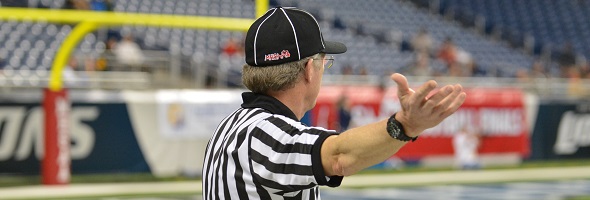
Be the Referee: Video Review - Part 1
January 8, 2015
This week, MHSAA assistant director Mark Uyl explains the use of video replay during MHSAA tournament events.
Be The Referee is a series of short messages designed to help educate people on the rules of different sports, to help them better understand the art of officiating, and to recruit officials.
Below is this week's segment - Video Review Part 1 - Listen
Over the past decade, the biggest change in all sports at the collegiate and professional levels, has been the expanded use of instant replay – or video review – relative to officiating decisions.
At the high school level, video review is currently used in two sports – ice hockey and basketball; is only used for the final two rounds of the MHSAA Tournament - Semifinals and Finals; and is allowed in very limited circumstances.
In ice hockey, video review can be used to determine whether or not a goal has or has not been scored and if it was scored before time expires; and in basketball, as time expires in the fourth quarter or overtime, video can be used to determine if the shot has gotten off in time and if the try was a two-point or three-point attempt.
Past editions
Dec. 17 - Registration Part 2 - Listen
Dec. 10 - Registration Part 1 - Listen
Dec. 3 - Legacy Program - Listen
Nov. 26 - Sideline Management - Listen
Nov. 19 - 7-Person Mechanics - Listen
Nov. 12 - Blocking Below the Waist - Listen
Nov. 5 - Tournament Selection - Listen
Oct. 29 - Uncatchable Pass - Listen
Oct. 22 - Preparation for Officials - Listen
Oct. 15 - Automatic First Downs - Listen
Oct. 8 - Officials & Injuries - Listen
Oct. 1 - Overtime - Listen
Sept. 25 - Field Goals - Listen
Sept. 18 - Tackle Box - Listen
Sept. 11 - Pass Interference - Listen
Aug. 25 - Targeting - Listen

See the Whole Play
August 19, 2014
Here are a few more pearls of wisdom from the nation’s leading gathering of sports officials, these from Barry Mano, NASO president:
- “Incorrect no-calls are easier to explain than incorrect calls.”
- “Officials are to enforce, not appease.”
- “In spite of their criticisms, there is no sensible parent who would want their child to participate without officials.”

